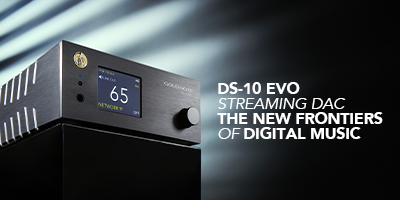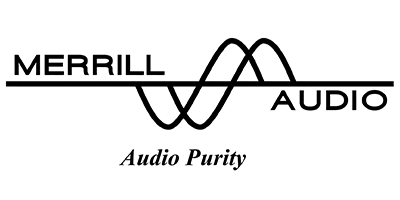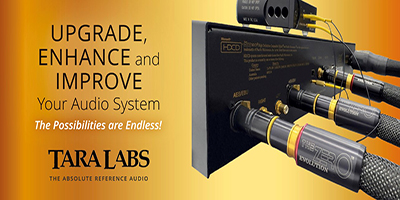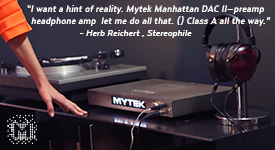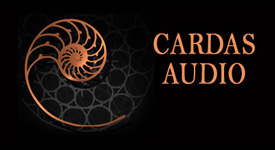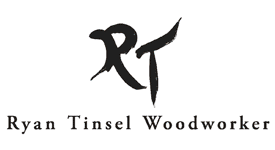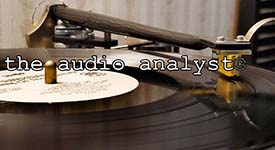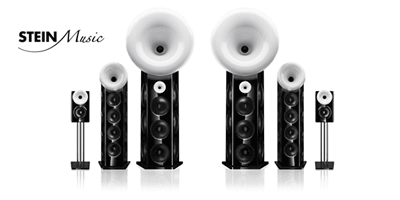I've been going through the bedding-in process for the Audio Note (UK) M8 RIAA phono preamplifier and the AN-S8L step-up transformer (SUT) since its arrival about 3 weeks ago (HERE).
Per the Audio Note (UK) owner's manual for the M8 RIAA (HERE), "The M8 RIAA phono stage requires around 100 hours of initial use (called “bedding in”) before the circuitry becomes stable and optimum performance is realized. As the device “beds in” the sound will become increasingly more smooth, detailed and open. A warm up time of approximately 30 minutes is required each time the device is switched on before optimum sonic performance is reached."
While the owner's manual (HERE) for the AN-S8L SUT doesn't specify an amount of bedding-in time for it, I'm bedding in the M8 RIAA & AN-S8L together, so each one is getting a 100 hours of bedding-in time.
The average length for LPs is about 45 minutes, so that translates into 133 1/3 LPs played through the M8 RIAA & AN-S8L to get them fully bedded-in.
When bedding-in I keep track of the playing time, or in this case by keeping track of the number of LPs I've played, to make sure I am hearing these components at their optimum level of performance.
At the moment I've played 47 LPs through the M8 RIAA & AN-S8L combo, which is a smidgen over a third of the required music signal going through the components.
I sent Peter Qvortrup a message when I published the introductory Today's Fresh Catch article about the M8 RIAA & AN-S8L, and a couple of days ago Peter checked in with me to see how the bedding-in process was going:
"So have the M8/S8 improved over the past 3 weeks or so?"
I thought my response to Peter about what I was hearing as the M8 RIAA & AN-S8L combo was bedding-in would make a nice update for all of you about what I was hearing from them now, about a third of the way through their bedding-in:
"The M8/S8 combo sounded really good to me right out of the box. I've listened to 43 LPs of the 133 LPs needed to get to the 100 hours of bedding-in time. The change so far is an increasing amount of refinement during bedding-in.
"What I hear from the M8/S8 combo is high contrast between recordings in terms of dynamics, timbre, recording quality, resolution, etc., and so it makes it fun to hear the differences in what the musicians are doing to achieve dramatic effect, the differences in recording styles, and the choices recording engineers made across the audio spectrum during mastering for any given album.
"A lot of information & nuance comes through, yet everything sounds very naturally musical, liquid, and very emotionally stimulating.
"The M8/S8 reminds me very much of what you were relating to me when you were telling me about your concepts of accuracy, authority, and authenticity in the comparison by contrast method of development.
"I think I am really starting to understand what those design principles bring to audio performance, and each higher level has made those principles even more apparent.
"What is perhaps most striking is how easy it is to "get" what the musicians and recording engineers were trying to convey to the listener in terms of the drama of the music, and remarkably that drama is independent of the fidelity of recordings.
"When I'm listening to an album it makes me feel like I am hearing the "authoritative" version of that album, the way the musicians & recording engineers hoped the listener would experience it.
"Hmmm ... I think that description would be a good start to an update article for readers about what I'm hearing from the M8/S8 as they are bedding-in!"
For a little context, of the 47 LPs played so far, I've been working my way through a few records that are old favorites, and a bunch of records I've never listened to before.
The albums consisted of varying genres like jazz, rock & roll, folk, opera, vocalists, etc., that were all recorded with different musicians, in different styles, in different locations, by different recording engineers and record labels.
The fidelity of the albums varied from lower-fidelity electric era recordings, to high-fidelity recordings from the stereo magnetic era of recordings (that us audiophiles adore), and also just regular ol' fidelity albums from across the monaural & stereo periods of the magnetic recording era.
Let me say a little more on a few of my comments to provide a little more context.
The M8 RIAA phono pre and AN-S8L SUT are what are called "high-contrast" reproducers of source material. They let a lot of musical information through in the sense of clarity and resolution - "information rich," I like to say - so it is very easy to hear the differences between albums in terms of the drama or quality of the performances, musicality attributes, visuospatial effects, the recording styles, choices made in mixing & mastering across the audio spectrum, the level of fidelity, and so forth.
With the M8 RIAA & AN-S8L combo it is readily apparent that each album is a unique production of the musical & recording arts.
A few examples: Listening to a monaural popular recording from years gone by, I wondered, "Why did the recording engineers think that adding that much reverb was a good idea?" Or in some opera recordings it sounded like the sub-bass region was cut, making the sound weaker and thinned out, and in others it was boosted too much, with the sub-bass region sounding overly powerful.
I noticed these sorts of mastering-mixing effects across the seven regions of the audio spectrum when they didn't get things quite right. Or conversely, when the musicians and recording arts nailed the production of the album it provided a natural sounding musical tapestry that was completely immersive and joyous.
You might think with all that resolution and musical information coming through it might mean these are analytical sounding components, but they are not at all. The sound quality is very natural, information rich, liquid, and musically engaging.
Basically, the records I've listened to so far sounded better than they have any right to, regardless of their recorded fidelity. Recordings revered by us audiophiles sounded absolutely stunning in that audiophile sort of way, with gorgeous musicality, vivid visuospatial portrayal of vocalists and musicians arrayed upon the soundstage, a sense of recorded ambience that made me feel like I was at the performances, or for other albums, like the musicians were performing for me in my living room.
Those recordings from later in the 78 era, and average ol' albums with lesser-fidelity than audiophile favorites, also revealed something important to me: the full drama of the album was delivered to me regardless of its level of recorded fidelity. Essentially, with the M8 RIAA & AN-S8L SUT combo, recorded sound quality and the quality/drama of the musical performances existed in co-joined but alternate realities.
Then there's this, perhaps the knock your socks off "superpower" of the M8 RIAA & AN-S8L SUT combination: I always felt while listening that the full drama of any given performance was being revealed before my ears. I felt like what I was hearing and feeling was what the musicians and recording engineers hoped I would experience from their album. Then there's this uncanny aspect of listening to albums: I was always left feeling like I had heard the "authoritative" version of that album, the very best version of the album.
I found the M8 RIAA & AN-S8L SUT combination to really be a lot of fun to listen to albums with. There were multiple deep levels of performance I experienced from them, each of which impressed me as a listener, and added to the sense of the remarkable level of involvement they provided.
I could revel in the intense emotional involvement the M8 RIAA & AN-S8L SUT provided from essentially any album of any fidelity. That trait importantly opens up a lot more listening possibilities from our recorded music canon than is typical with audio kit. Even early lower-fidelity albums were revealed to be amazing for the fine singers and musical performances they contained.
I was deeply impressed at how different each recording was from another - the high-contrast listening experience. I geeked out about what I could discern about different recording styles, the different mastering-mixing choices across the audio spectrum for any given album, and the dramatic choices by the musicians to get the "feel" of their music across.
Then there's the sound quality of this pairing. The best recorded performances from the stereo magnetic era of recording were impressive in the extreme, but I was also impressed how they elevated the sound quality of recorded performances of lesser fidelity.
Well that's all for now. I'll keep listening and taking notes. In my next update I'll tell you more about how the circuit components in the M6 & M8 RIAA compare with a photographic "walk-through" of their circuits.
I'll also share some very interesting comments from Peter about the empirical nature of his comparison by contrast method of development that will fit in very well with a photographic walk-through of the circuit components.
And, of course, an update of my listening impressions as the bedding-in period gets a littler further along.
As always, thanks for stopping by, and may the tone be with you!

